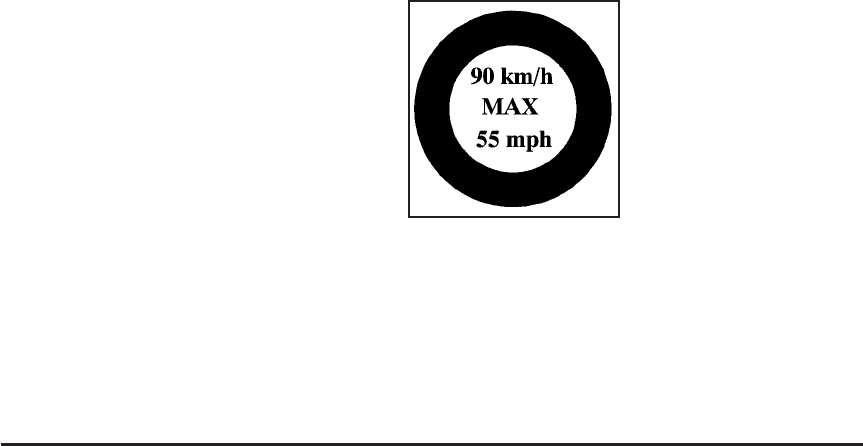
9. Inflate the tire to the recommended inflation pressure
using the pressure gage (E). The recommended
inflation pressure can be found on the Tire and
Loading Information label. See Inflation - Tire
Pressure on page 5-56.
The pressure gage (E) may read higher than the
actual tire pressure while the compressor is on.
Turn the compressor off to get an accurate pressure
reading. The compressor may be turned on/off
until the correct pressure is reached.
Notice: If the recommended pressure cannot be
reached after approximately 25 minutes, the vehicle
should not be driven farther. The tire is too severely
damaged and the tire sealant and compressor kit
cannot inflate the tire. Remove the power plug from
the accessory power outlet and unscrew the inflating
hose from the tire valve. See Roadside Assistance
Program on page 7-7.
10. Press the on/off button (D) to turn the tire sealant
and compressor kit off.
The tire is not sealed and will continue to leak
air until the vehicle is driven and the sealant
is distributed in the tire, therefore, Steps 11
through 17 must be done immediately after
Step 10.
Be careful while handling the tire sealant and
compressor kit as it could be warm after usage.
11. Unplug the power plug (C) from the accessory
power outlet in the vehicle.
12. Turn the sealant/air hose (F) counterclockwise to
remove it from the tire valve stem.
13. Replace the tire valve stem cap.
14. Replace the sealant/air hose (F), and the power
plug (C) back in their original location.
15. If the flat tire was
able to inflate to the
recommended inflation
pressure, remove
the maximum speed
label from the sealant
canister (B) and
place it in a highly
visible location.
The label is a reminder not to exceed 55 mph
(90 km/h) until the damaged tire is repaired
or replaced.
5-78


















